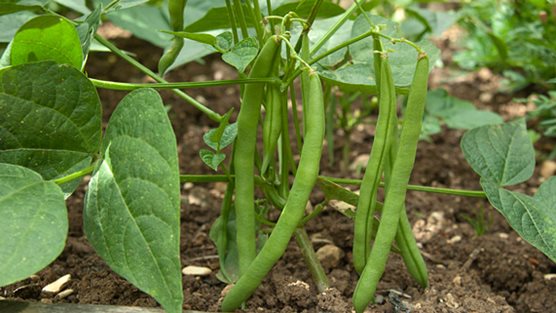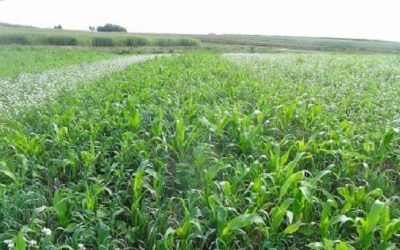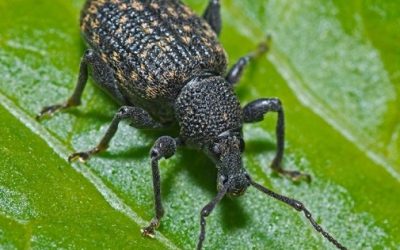
Start your French bean seeds off indoors
Planting seeds too early outside – especially if it’s cold and damp – can lead to them rotting in the ground, before they are established. Try starting them off in small pots.
You can do this from early April if you have a greenhouse. Or you can keep the pots outside from late April.
Plant out the seedlings once most of the frost risk has passed, to give them a good chance of thriving.
Water them well
You don’t want to over-water your French beans, or they’ll rot at the base. But letting them dry out means the flowers tend to drop off before they have been fertilised and you’ll get much less crop for your space.
Also, think about how juicy a French bean pod is – that needs plenty of moisture to make it that way.
In hot weather, wait till the plant is out of direct sunlight for the day and then water well at the base – not on the leaves (or there’s a risk of mildew).
Some people like to use their favourite mulch around the base of French bean plants, too, to help them stay hydrated.
Remember to ‘feed the hungry’, too. French beans are great at nourishing the soil for next year’s brassica crop, as long as you have fed them well during this season’s growing phase.
Consider succession planting 3 week old French bean seedlings
3 week old French bean seedlings – Veg Patch Diaries
French beans aren’t something we normally think about planting regularly throughout the summer. They tend to be a ‘sow and forget’ crop – done once and it’ll last all season.
But by starting off your crop in the greenhouse in April and then planting every 4-6 weeks until July, you get a succession of tender young beans all the way through to the autumn.
It also means, if a plant starts to go stringy, you can either pull it out (and compost) or leave those pods to dry out for storage beans.
Give them space to breathe
The mistake I have probably made most often, especially with dwarf French beans, is planting them too close.
When the seed packets tell you the planting spacing, it seems ridiculously far apart for a teeny weeny seed. But once those bushes are full-sized, they’ll be competing for space like triffids in a jungle. This has 2 main pitfalls:
They’re much more likely to suffer from diseases (such as mildew or bean viruses) or bugs, if they’re overcrowded.
It’s nearly impossible to see the harvest-ready French beans if they’re overcrowded. Unless you’re growing a French bean variety such as waxpod or Purple Queen, your green beans are going to be green as the leaves.
Give them space to breathe and they’ll thank you for it.
Give them some support.
So often farmers make the mistake of thinking ‘oh, I’ll put the poles in tomorrow’. Suddenly a few weeks have passed and they’re left with a tangled mess of climbing French beans in the middle of the veg patch.
I know it sounds boring, but you need to do it anyway, so you might as well do it while you can still make your way around the plants, rather than putting it off…
Even so-called ‘dwarf’ varieties sometimes need support. Keep an eye on them as they grow and loosely tie them to a cane, if they’re getting droopy.
Don’t harvest all your beans at once. It’s easy to get carried away and pick a large bowl of French beans in one go, but they’re so much tastier when they’re still fresh and crunchy, rather than a week old and slightly wilty.
Don’t plant more plants than you need at any one time and only harvest when you need them.
This also encourages the plants to keep flowering for longer, so you’re producing a steady supply of beans, when you need them, avoiding French bean gluts.
But don’t let the pods ‘go to seed’ unless you’re ready for the plant to finish producing fresh green pods. Letting the beans in the pods get to seed size gives the plant the signal that its work is done and you’ll see no more flowers.


